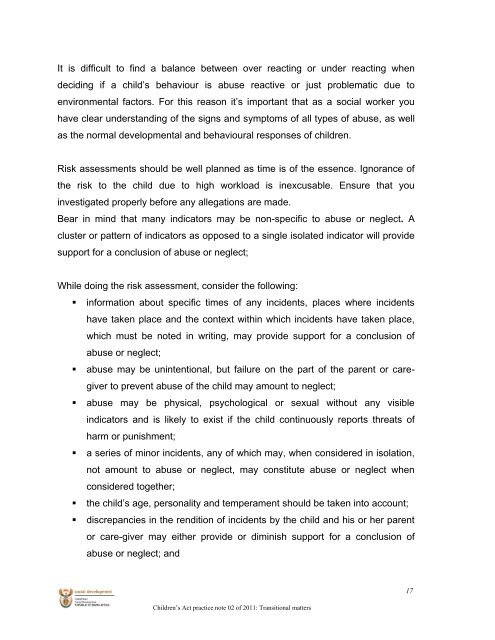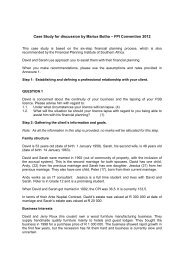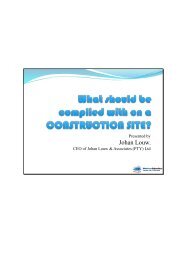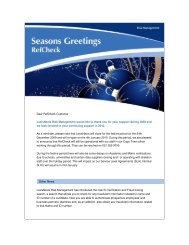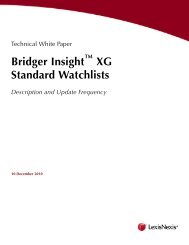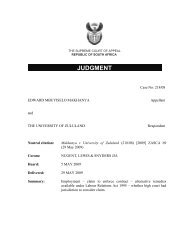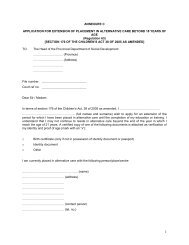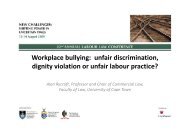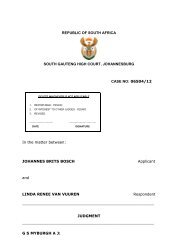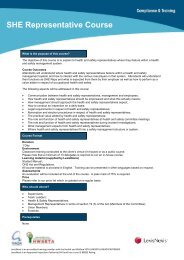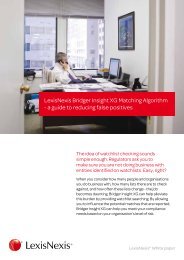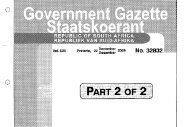Children's Act Practice Note 2 of 2011 - LexisNexis South Africa
Children's Act Practice Note 2 of 2011 - LexisNexis South Africa
Children's Act Practice Note 2 of 2011 - LexisNexis South Africa
Create successful ePaper yourself
Turn your PDF publications into a flip-book with our unique Google optimized e-Paper software.
It is difficult to find a balance between over reacting or under reacting whendeciding if a child’s behaviour is abuse reactive or just problematic due toenvironmental factors. For this reason it’s important that as a social worker youhave clear understanding <strong>of</strong> the signs and symptoms <strong>of</strong> all types <strong>of</strong> abuse, as wellas the normal developmental and behavioural responses <strong>of</strong> children.Risk assessments should be well planned as time is <strong>of</strong> the essence. Ignorance <strong>of</strong>the risk to the child due to high workload is inexcusable. Ensure that youinvestigated properly before any allegations are made.Bear in mind that many indicators may be non-specific to abuse or neglect. Acluster or pattern <strong>of</strong> indicators as opposed to a single isolated indicator will providesupport for a conclusion <strong>of</strong> abuse or neglect;While doing the risk assessment, consider the following:• information about specific times <strong>of</strong> any incidents, places where incidentshave taken place and the context within which incidents have taken place,which must be noted in writing, may provide support for a conclusion <strong>of</strong>abuse or neglect;• abuse may be unintentional, but failure on the part <strong>of</strong> the parent or caregiverto prevent abuse <strong>of</strong> the child may amount to neglect;• abuse may be physical, psychological or sexual without any visibleindicators and is likely to exist if the child continuously reports threats <strong>of</strong>harm or punishment;• a series <strong>of</strong> minor incidents, any <strong>of</strong> which may, when considered in isolation,not amount to abuse or neglect, may constitute abuse or neglect whenconsidered together;• the child’s age, personality and temperament should be taken into account;• discrepancies in the rendition <strong>of</strong> incidents by the child and his or her parentor care-giver may either provide or diminish support for a conclusion <strong>of</strong>abuse or neglect; andChildren’s <strong>Act</strong> practice note 02 <strong>of</strong> <strong>2011</strong>: Transitional matters17


